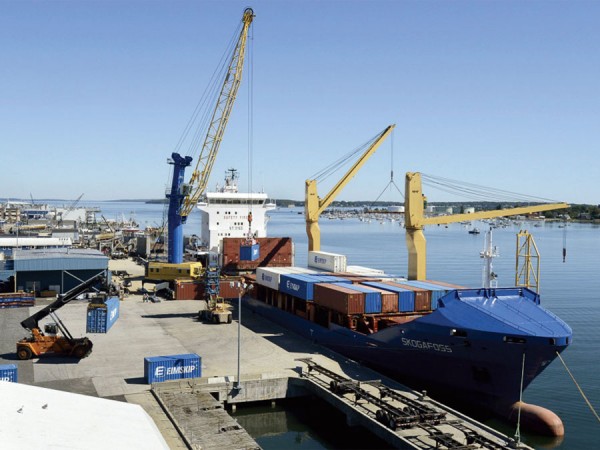A little over five years ago, Eimskip, the Icelandic ocean carrier, began calling at the Port of Portland. The carrier established its U.S. headquarters in Portland, Maine and restored containership calls to the port. The carrier now is providing a weekly service which has seen port calls increase by 46%.
Besides the uptick in calls, last year Portland received its second mobile crane that was purchased with $3.2 million in Maine state bonds.

Last year, Americold dropped plans to build a cold storage facility near the International Marine Terminal, throwing cold water on any ideas of the port becoming a staging site for perishable cargos like blueberries.
Late in 2018, the Maine Port Authority agreed to provide $8 million from the State’s transportation budget and use federal tax incentives and raise a matching $8 million from the private sector to jumpstart the plan for a cold storage facility expected to cost nearly $30 million. The Federal “New Markets Tax Credit” program gives investors up to a 39% income tax credit for putting money into qualified projects like the proposed cold storage facility.
The big difference this time around is the facility would be located on State-owned land near the International Marine Terminals.
Portsmouth Receives Federal Grant
In New Hampshire, the Port of New Hampshire has received good news as it was announced the port would receive a $7.5 million BUILD (Better Utilizing Investments to Leverage Development) federal grant to rehabilitate the main wharf at the Market Street Marine Terminal. The good news was a long time in coming as for over a decade Portsmouth has been seeking a grant to help rebuild the wharf. The dock was originally built in 1962 and added on to in 1977, but over the years has deteriorated and in recent years’ sections have been blocked off and deemed unsafe for use.
The grant will be used to rehabilitate approximately 17,500 sq./ft. of the terminal on the Piscataqua River by replacing the deteriorating wharf access bridge, and decking the area between the shoreline and the back of the main wharf. Work is expected to begin in 2021.
The improvements stand to open the port to a wide variety of new cargo opportunities ranging from traditional breakbulk to project work such as wind power both for onshore and perhaps even offshore as a staging site.





